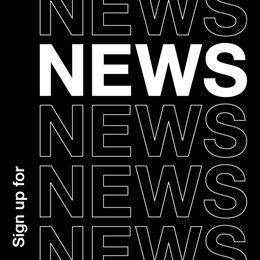The quiet revolution in typography: How type is becoming the voice of brand differentiation

In an increasingly AI-generated world, typography is still one of the most human and expressive parts of a brand. Waqas Mohammed Amin, creative and production services director at the Saudi Government, explores the strategic role of typography, especially in bilingual and Arabic-script identities as a subtle but powerful tool for differentiation.
In an era where brand design is increasingly touched by automation and generative AI tools, typography remains the most expressive component of brand identity. More than just a design element, type is fast becoming a core strategy, a voice that reflects your brand’s pace, tone and emotional resonance.
Typography’s greatest strength is its subtlety. As the medium, it carries the message. Although logos and colour palettes are generally the first things noticed about a brand, typography carries the brand’s message across platforms and media. From social media campaigns to packaging, from presentation decks to digital interface, typography builds brand recognition. It doesn’t just support the brand; it literally is the brand in motion.
The choice of type isn’t just an aesthetic concern. The subtextual value of the type lies in its ability to express character and emotion, to convey authority or create warmth without a word being spoken. The weight of a headline, the roundness of a glyph (the specific visual representation of the character or letter), the spacing between letters, are all intentionally designed decisions shaping perception. These make a brand feel premium or accessible, quiet or bold, timeless or contemporary.
Typeface in MENA
This quiet revolution is particularly relevant in regions where language is layered. In the Middle East and North Africa region (MENA) market, in which brands need to communicate in both Arabic and Latin, typography is a bridge carrying meaning across cultural, linguistic and visual boundaries. It is the medium through which all brand information is conducted. When done effectively, it allows a brand to feel cohesive, familiar and intentional, regardless of the language used to communicate.
When building a bilingual brand to communicate in both Arabic and English, selecting the right typeface pairing is crucial for consistency, legibility and tone. Several type families are designed with cross-script harmony in mind. I will offer several specific examples, offering a non-comprehensive list of useful fonts.
For brands working bilingually in Arabic and English, as many brands do in the MENA area, this challenge broadens significantly. It’s not sufficient to randomly pair two typefaces. Multilingual typography must feel unified, and a strong typographic coordination requires thoughtful pairing, visual calibration and, in some cases, customisation. Arabic scripts, rich in calligraphic heritage, require the same design sensitivity as Latin counterparts. When designed with balance and respect, the Arabic type becomes a powerful storyteller in its own right.
Font pairings
Cairo is a versatile Google font that supports both scripts in a unified geometric style. RB by TPTQ Arabic is another excellent bilingual option, offering balanced expression across Arabic and English typefaces.
There are also families of typefaces designed to maintain rhythm, weight, and proportion between English and Arabic types. Adelle Sans and Adelle Sans Arabic is a pairing that makes a good choice for editorial or corporate applications.
Similarly, Noto Sans and Noto Sans Arabic offer clean, digital-friendly fonts for global interfacing.
For a more institutional tone, GE SS Two Arabic paired with Helvetica Neue or DIN Next Arabic with DIN Pro ensures visual cohesion and brand authority.
For maximum legibility across environments, Frutiger Arabic together with Frutiger offers clarity and character. This font pairing provides a strong foundation for bilingual brands to communicate with visual balance.
Typography builds trust by carrying the rhythm of a brand. When done effectively, it allows brands to whisper instead of shout, and, in a noisy world, that subtlety is memorable. In an age where visual consistency is less about repetition than character, the typeface you choose plays a central role.
Typography and AI
A new layer emerging is the intersection of typography and AI. As designers experiment with AI-powered type generators and adaptive design systems, the question is not if we can create type faster, but should we?
The best brands find balance. They employ technology to enhance rather than replace typographic storytelling. They see type as a living expression of who they are and how they think. Brands that invest in typography stand apart emotionally. Typographic choice is key to branding in the age of AI, because when every brand is shouting, the ones who know how to speak softly through design are the ones who are truly heard.













